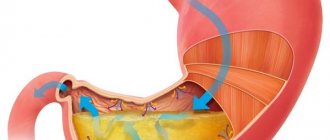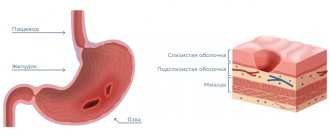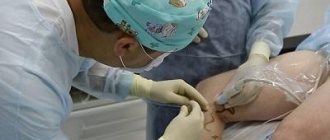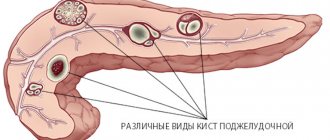Progesterone
One of the most important hormones in the body is progesterone. This is a steroid hormone that is synthesized in women and men. In the male body, small amounts of progesterone are produced by the adrenal glands and testes. In a woman’s body, progesterone is involved in regulating the functioning of the reproductive system.
Progesterone is sometimes called the pregnancy hormone. This name did not appear by chance. Progesterone is required for the successful attachment of a fertilized egg to the wall of the uterus, and is also responsible for many processes that occur during pregnancy.
The main functions of progesterone in the female body
In a woman’s body, progesterone controls the following processes:
- Stimulates the growth of the endometrium of the uterus so that the egg can implant.
- It prevents contraction of the uterine muscles and, as a consequence, miscarriage, which often occurs in the early stages.
- Helps stop menstruation in pregnant women.
- Regulates the enlargement of the uterus during pregnancy.
- Stimulates the functioning of the sebaceous glands.
- Necessary for the formation and transformation of fetal tissue.
Since progesterone plays a huge role not only in the onset of pregnancy, but also in its course, its level increases several times immediately after implantation of the embryo into the uterine wall.
Decoding indicators
If in the transcript of the analysis the progesterone indicator is indicated in ng/ml, then to obtain the most accurate indicator it is necessary to divide the figure by 3.18. The level of progesterone in the blood of boys and girls before puberty is the same and is less than 1.1 nmol/l. With the entry into adolescence, the beginning of hormonal changes and the active formation of sexual function, norms become different for children of both sexes. The production of progesterone outside of pregnancy largely depends on the stage of the menstrual cycle.
Progesterone test
The concentration of progesterone depends on the phase of the cycle. So, during menstruation and until the middle of the cycle, its level is minimal, and after ovulation (usually on the 14th–15th day) the concentration increases. The maximum level is reached in the luteal phase: the egg transforms into the corpus luteum and synthesizes progesterone on its own.
The dependence of progesterone concentration on phase is due to the following:
1. At the beginning of the cycle, the body is preparing for ovulation, so it does not yet need the pregnancy hormone.
2. After ovulation, the female reproductive system rapidly prepares for the possible conception of a child, so the level of progesterone increases sharply, because it is necessary for the successful attachment of the egg to the uterus.
The level of progesterone in the body is determined by its content in the blood. This test is taken on an empty stomach (also acceptable 7 hours after eating). Since the concentration of progesterone depends on the phase of the cycle, the doctor needs to know the duration of the cycle to set a date for the test.
If the cycle lasts 28 days, then the analysis is prescribed on the 21st–22nd day: at this time you can get the most informative results.
For a 34-day cycle, the study is carried out on the 27th day. If the cycle is regular, then determining the date will not be difficult: you need to subtract 7 days from the approximate date of the start of menstruation (you can also add 7 days to the approximate date of ovulation).
If your cycle is irregular, a specialized test will help you calculate the date of ovulation. You can also resort to another method - measuring basal temperature and drawing up a schedule.
Normal progesterone level for a non-pregnant woman
Since progesterone concentrations fluctuate throughout the month, do not be surprised if you need to take a blood test several times. Hormone levels are measured in nanomoles per liter (abbreviated as nmol/l).
If a woman is healthy, then the following norms are relevant:
The given values are relevant only for women of childbearing age. During menopause, the normal progesterone concentration is approximately 0.64 nmol/L.
Progesterone standards for a pregnant woman
The level of progesterone in the blood of a woman carrying a child is higher. In the first trimester, this hormone is actively secreted by the corpus luteum. It is needed to ensure that the uterus does not contract and a miscarriage does not occur. From the 16th week, the placenta also synthesizes this hormone.
The following indicators are considered normal for a pregnant woman:
Of course, during each trimester the concentration changes slightly. Therefore, gynecologists resort to additional methods and use special tables that divide the level by week of pregnancy.
Various factors, including certain medications, can affect the concentration of progesterone in the blood. Therefore, it is necessary to inform your doctor that you are taking any medications both before the test and at the appointment.
Progesterone level test
With a regular cycle, the hormone level should be examined on day 22. If the menstrual cycle is not regular, the doctor prescribes repeated tests in order to more accurately assess the state of hormonal levels.
A test for progesterone levels should be carried out no less than 8 hours after eating. The best time to get tested is in the morning. The concentration of the hormone progesterone is affected by the day of the menstrual cycle, pregnancy, and the use of certain medications.
If there is excessive progesterone production or its concentration is too low, the first thing to do is consult a specialist. The doctor will select an individual course of treatment and help eliminate the problem.
Next: » Thyroid-stimulating hormone
Low progesterone
If there is not enough progesterone produced, the menstrual cycle is disrupted, and women who want to become pregnant often experience problems conceiving or early miscarriages. Moreover, low concentrations of this hormone can be detected even in apparently healthy women.
A decrease in progesterone levels occurs for a number of reasons:
Also, low progesterone levels may be due to the fact that you incorrectly determined the day of your cycle.
However, low concentrations may have more serious reasons:
Signs of low progesterone levels:
If a woman is planning a child, she must understand that with reduced progesterone, pregnancy will not occur in the vast majority of cases or the risk of spontaneous abortion will be very high.
Low progesterone levels can be corrected. Doctors recommend starting treatment 2–3 months before the planned conception. This is hormone replacement therapy, that is, the woman is recommended to take hormones. Moreover, such treatment is also possible throughout pregnancy to reduce the risk of miscarriage. In addition, it is necessary to review your diet to stimulate the natural synthesis of hormones. You should add dairy products, protein, and nuts to your diet.
To normalize progesterone levels, you must first identify and eliminate the cause of the decrease in its concentration. If a woman is already expecting a child, the search for the cause is postponed until after childbirth.
Excessive and insufficient production of progesterone
Too low progesterone concentration may indicate the following problems:
- Failure of the menstrual cycle.
- Chronic inflammation of the reproductive system.
In some cases, the reason for the decrease in progesterone is the use of certain drugs. Only a qualified doctor can balance the concentration of the hormone, who, depending on the individual needs of the body, will prescribe suitable treatment.
When the hormone progesterone decreases in a pregnant woman, we can talk about the following disorders:
- Risk of miscarriage.
- Violation of fetal development.
- Malfunction of the placenta.
In most cases, excessive progesterone production is associated with pregnancy. If it is excluded, then a high concentration can signal cycle disruptions, adrenal dysfunction, a malignant tumor, etc.
In a pregnant woman, high levels of the hormone can signal disturbances in the formation and development of the placenta.
Why is progesterone elevated?
What does an elevated 17-OH progesterone level indicate? When assessing the results, not only the fact of its increase in the blood flow is considered, but also the degree of difference from normal indicators:
- A slight change in the concentration of the hormone suggests infertility, the occurrence of a tumor in the ovaries or adrenal glands. A woman may develop a hormonal imbalance, as a result, a whole “bouquet” of diseases, including diabetes.
- A noticeable deviation from the norm is observed in congenital adrenal hyperplasia, as well as in premature infants.
- High rates appear against the background of the growth of hormone-dependent tumors of the ovaries and adrenal glands.
Modern approaches to the prescription of progesterone in the practice of an obstetrician-gynecologist
The article discusses the features of natural progesterone and its differences from synthetic progestogens in terms of chemical structure, pharmacodynamic properties and clinical effects.
The advantages of natural progesterone over synthetic progestogens in the treatment of infertility and miscarriage are substantiated. Indications for the use of natural progesterone in obstetrics and gynecology are given.
Table 1. Biological activity of progesterone and synthetic gestagens in relation to various receptors
Table 2. Comparative analysis of the biological effects of endogenous progesterone, bioidentical progesterone and dydrogesterone
Rice. Drugs used to maintain corpus luteum function
The study of ovarian hormones, and especially the hormones of the corpus luteum, began in the first half of the 20th century. In Germany, a hypothesis was put forward, which was later confirmed, according to which the corpus luteum of the ovaries is an endocrine organ and produces a substance necessary for the uterus to accept the fertilized egg. This hormone was discovered independently by several research groups. In 1933, GW Corner and WM Allen isolated several components of the corpus luteum, one of which was progesterone [1, 2]. In 1940, RE Marker isolated natural progesterone, the molecular structure of which was identical to human progesterone, from yams, or sweet potatoes. However, it was only in 1971 that WS Johnson succeeded in synthesizing progesterone in the laboratory without the use of plant or animal raw materials. Numerous studies on the effect of progesterone and its analogs on various organs and tissues have made it possible to develop a series of progestin drugs intended for hormone replacement therapy, correction of the menstrual cycle and reproductive function, treatment of certain gynecological diseases, as well as the prevention of unwanted pregnancy [3].
Progesterone is a natural steroid hormone that is produced by the corpus luteum of the ovary, placenta, and adrenal glands. In the initial phase of the postovulatory period, when there is a short-term drop in the concentration of steroids in the blood, the burst follicle begins to fill with luteal cells, which are yellow in color and rich in lipids. The biochemical specialization of luteal cells is such that, under the influence of luteinizing hormone (LH), acting through the adenylate cyclase system, they produce large and gradually increasing amounts of progesterone and estrogens [4].
The concentration of progesterone in the blood plasma depends on a number of factors: the size of the corpus luteum, or rather the number of luteal cells in it, their functional abilities and the vascularization of the gland. The vital activity of the corpus luteum is supported by two main hormones that have a homologous structure - LH and human chorionic gonadotropin. Progesterone promotes the production of follicle-stimulating hormone (FSH), in small doses it activates, and in large doses it inhibits the release of LH. With increased estrogen levels, progesterone reduces the sensitivity of the uterus to acetylcholine, adrenaline, and estrogens. Under the influence of progesterone, the development of alveoli in the mammary glands occurs, the endometrium undergoes secretory transformation and its rejection is initiated. Progesterone promotes the reverse development of adenomatous hyperplasia, increases the resting potential in smooth muscle cells, thereby relaxing the smooth muscles of the uterus and suppresses the contractility of the fallopian tubes. Progesterone increases the secretion of the mucous layer lining the fallopian tubes. The secretion produced by the mucous membrane serves as a nutrient medium for a fertilized dividing egg moving through the fallopian tubes before its implantation in the uterus.
When pregnancy occurs, the concentration of progesterone increases until the 7th week of gestation, after which it decreases slightly, and from the 10th week the level of progesterone gradually increases again until the moment of birth. In early pregnancy, the main source of progesterone is the corpus luteum, with the peak of its secretion occurring in the 6th week of gestation. As has been shown in animal experiments, removal of the corpus luteum before the 6th week of pregnancy in all cases leads to miscarriage. After 16 weeks of pregnancy, the secretion of progesterone by the placenta becomes sufficient to continue the development of pregnancy. Thus, adequate functioning of the corpus luteum is an essential condition for the development and progression of pregnancy, especially in the first 6 weeks of gestation.
It should be noted that only natural progesterone is a substrate for reduced 5-alpha and 5-beta metabolites, which have their inherent specific effect on the sexual differentiation of the fetus, on the skin, brain cells and myometrium. Progesterone regulates androgen levels in two ways: through competitive inhibition of 5-alpha androgen reduction and through 5-alpha-pregnandione (a 5-alpha metabolite of progesterone), which competitively inhibits the binding of dihydrotestosterone to its receptors. Blockade of 5-alpha reductase does not change the direct action of testosterone, but physiologically regulates its conversion to the active form - dihydrotestosterone, and this mechanism is extremely important for sexual differentiation from the 12th to the 28th week of pregnancy. Thus, progesterone is the only safe progestogen for use in the early stages of pregnancy [4].
At different periods of women's lives, the influence of progesterone at the cellular and tissue levels has its own characteristics. The number of progesterone receptors stimulating the effect of estrogen depends on age. During the pubertal period, due to the not yet established circadian rhythm of the release of LH releasing hormone, even during ovulatory cycles, the corpus luteum functions defectively, and, accordingly, progesterone is secreted in small quantities. The maximum effect of progesterone is observed during the reproductive period of a woman. The consequence of a lack of progesterone in a woman’s body is menstrual irregularities, infertility and recurrent miscarriage [4].
Most of the effects of progesterone on ovulation, the process of egg implantation in the uterus, are carried out through progesterone receptors synthesized in the reproductive tract. The additive effects of progesterone are mediated by the presence of receptors for it in the hypothalamus, pituitary gland, mammary glands, bones, gastrointestinal tract, bladder, urethra, thymus and cardiovascular system. The progesterone receptor gene is localized on chromosome 11q22 and is represented by isoforms A, B and C. There are 2 types of progesterone receptors (PR-A, PR-B). The ratio of A and B receptors in target tissues determines the nature of the response to progesterone and the variability of the effect of gestagens. Stimulation of PR-A helps to suppress proliferation processes. PR-B mediate an antagonistic effect on cells. Both conformations of the progesterone receptor have a domain that forms a bond with the steroid. It has now been determined that activation of progesterone receptors helps trigger the transcription of about 1800 genes, 60 of which have a specific functional focus in relation to the reproductive system. When progesterone receptors type B are activated, levels of the agonist/auxiliary proteins of the transforming growth factor beta receptor (TGF-beta) and the epidermal growth factor receptor (EGF) increase. These receptors, using intracellular signaling mechanisms, trigger cell division through DNA replication, antioxidant response, and stabilization of the mitotic spindle. Progesterone is related not only to the progesterone receptors of the endometrium, but also to the receptors of estradiol, cortisol, testosterone and aldosterone. Progesterone is able to compete with aldosterone for receptors located in the kidneys and, to a greater extent, in the myometrium and arterial walls [5].
A systematic analysis of the physiological effects of progesterone, carried out through the transcription of genes that are not specific to the reproductive system, demonstrated their multidirectional nature. For example, activation of the transcription of olfactory receptors contributes to an increased sense of smell in pregnant women. Increased expression of epidermal growth factor receptors reflects the influence of progesterone on the processes of proliferation and differentiation of the epidermis [6].
The anxiolytic effect and the formation of pregnancy dominance are the result of increased transcription of serotonin receptors and are mediated by the 5-alpha progesterone metabolite 5-alpha-pregnanolone, which binds to GABA receptors in the brain. Excessive stimulation of these receptors activates the synthesis of GABA in the brain and can lead to cognitive dysfunction and changes in the emotional status of a woman. The progesterone metabolite, 5-alpha-pregnanolone, has anti-dysphoric activity, is involved in the regulation of sleep and wakefulness, and possibly has a neuroprotective effect after damage to brain tissue and modulates carcinogenesis processes in the brain [6].
The tocolytic effect of progesterone on the uterine muscles and the regulation of blood pressure are carried out by reducing the level of prostaglandins and are mediated by 5-beta metabolites - 5-beta-pregnandione and pregnanolone. Blood pressure can be corrected to prevent the development of preeclampsia. Progesterone in physiological concentrations has a beneficial effect on the activity of macrophages and the proliferation of endothelial cells and smooth muscles of the arterial wall [6].
The state of immunotolerance during pregnancy against the background of increased progesterone levels ensures the safe progression of pregnancy and fetal development. Progesterone-induced blocking factor (PIBF), synthesized in response to the interaction of progesterone with progesterone receptors, is a triggering factor in the development of immunosuppression during pregnancy. Progesterone modulates the process of differentiation of T-lymphocytes in the Th2 direction, controls the cytotoxicity of natural killer cells (NK cells) and the synthesis of pro-inflammatory cytokines (interleukins (IL) - IL-4, IL-6, IL-10) [6 ].
Progesterone has a protective effect on the vascular endothelium, which is realized only at physiological levels of progesterone. Increased stimulation of endothelial receptors during treatment with synthetic progestins leads to a change in its function by affecting vasodilation, lipid transport, protein adhesion and, as a consequence, a change in the morphological state of the vascular wall. It should be noted that synthetic gestagens are well tolerated by patients, but their use is contraindicated during pregnancy, in patients with impaired liver function, in patients with breast cancer, cerebrovascular diseases and coronary artery dysfunction, in women with a history of thromboembolism, as well as in women who smoke [6, 7].
Currently, none of the synthetic progestins (except drospirenone) have antialdosterone effects, and none of them (including dydrogesterone) are capable of forming the 5-alpha and 5-beta reduced metabolites necessary for the physiological effects of progesterone. All synthetic progestins were created on the principle of their high affinity and duration of interaction with progesterone receptors, as a result it turned out that too strong a connection of synthetic progestins with endothelial receptors increases the risk of developing cardiovascular diseases in primates and humans. Unlike synthetic progestins, natural progesterone is converted into functionally active metabolites. 20-alpha-hydroxyprogesterone and 17-hydroxyprogesterone prolong the pharmacological effects of progesterone. 5-alpha-pregnandione has an affinity for testosterone receptors, inhibiting the effect of the latter, reducing the mitotic potential of endometrial cells. 5-beta-pregnandione blocks the uterotonic effects of oxytocin. Pregnanolone and allopregnanolone are GABA receptor agonists and have anxiolytic effects [4].
From its discovery to the present day, progesterone has been widely used in the practice of obstetrician-gynecologist. More detailed studies of the effect of progesterone on various organs and tissues made it possible to expand the list of indications for its use. Many large randomized controlled studies have been devoted to studying the main effects and safety of bioidentical progesterone in comparison with synthetic progestins. Tables 1 and 2 present the main biological effects of progesterone and synthetic progestins [2–4, 8–10, 12].
Bioidentical progesterone, unlike synthetic analogues, is completely similar to the endogenous progesterone molecule. It is this property that provides a number of its unique properties and a small number of side effects.
Corpus luteum insufficiency (luteal phase disorder of the menstrual cycle) is a condition in which the corpus luteum produces progesterone in quantities insufficient for implantation of a fertilized egg and its development in the endometrium. Any disturbance in the growth and development of the follicle can lead to corpus luteum deficiency. Insufficiency of the corpus luteum is almost always manifested by menstrual irregularities, premenstrual syndrome, habitual spontaneous miscarriage in the early stages or premature birth in late pregnancy, and less often - primary infertility. Correction of defective corpus luteum function with progesterone is pathogenetically justified [9].
H. M. Fatemi et al. In our study, we conducted a comparative analysis of the effect of dydrogesterone in the form for oral administration and intravaginally administered micronized progesterone on the process of secretory transformation of the endometrium and the hormonal profile in women with premature loss of ovarian function. Against the background of vaginal use of micronized progesterone on the 21st day of the cycle, the histological picture of the endometrium corresponded to full secretory transformation in 83% of women, against the background of the use of oral dydrogesterone - only in 17% (p
In a double-blind, placebo-controlled, multicenter study lasting 3 years, it was determined that in pregnant women with a short cervix, daily intravaginal use of progesterone at a dose of 200 mg from the 24th to the 34th week of pregnancy significantly reduced the incidence of spontaneous preterm birth by almost 2 times [12].
In 2001, S. Wyatt published the results of a meta-analysis to determine the effectiveness of various regimens of micronized progesterone (per os versus per vaginal or per rectum) and progestins (dydrogesterone, medroxyprogesterone acetate, norethisterone acetate) in women with various types of premenstrual syndrome. The use of oral progesterone was 30% more effective than progesterone with other routes of administration and progestins, respectively (p
In 2009, based on a survey of specialists from 97 in vitro fertilization centers from 35 countries, data from an analysis of 50,000 treatment cycles within the framework of the in vitro fertilization (IVF) program were presented. As shown in the figure, 34% of respondents used progesterone vaginally in the form of a gel or cream, 30% in the form of vaginal capsules, 15% combined vaginal forms with intramuscular injections of progesterone. Thus, vaginal forms of progesterone are preferable and more convenient as hormone replacement therapy in an IVF program [14].
In conclusion, it should be noted that women wishing to become pregnant, especially with the help of assisted reproductive technologies, can only be prescribed bioidentical progesterone to maintain the function of the corpus luteum; The optimal method of application remains vaginal. Synthetic progestin cannot replace progesterone during pregnancy. In all pregnant women, synthetic progestins increase the risk of impaired control of uterine contractility and, possibly, the birth of a premature baby. Progesterone is a key hormone for ensuring endometrial receptivity during the “implantation window” phase, creating optimal conditions for adhesion and invasion of the fertilized egg and further normal development of pregnancy.
Oral administration promotes rapid entry of progesterone into the blood plasma and a more pronounced neuroprotective and anxiolytic effect, which is most important in patients with premenstrual syndrome.
In premenopausal women (with close to normal secretion of endogenous estradiol, but a short or insufficient corpus luteum phase), oral administration of micronized progesterone is an effective method for relieving symptoms and eliminating the consequences of progesterone deficiency (menstrual disorders, secondary amenorrhea, endometrial hyperplasia).
In postmenopausal women, the use of progestogens should not be accompanied by an increased risk of developing cardiovascular diseases.
Therefore, the optimal type of therapy would be oral progesterone, which in adequate doses does not reduce the level of high-density lipoproteins, does not affect glucose metabolism and does not eliminate the beneficial effects of estrogens on the arterial wall (vasodilation, low-density lipoprotein transport, macrophage activity and adhesion, proliferation smooth muscle cells, maintaining connective tissue structure). Progesterone in combination with transdermal estrogen drugs reduces the mitotic activity of mammary epithelial cells and thereby reduces the risk of developing breast cancer (compared to treatment with estradiol alone). That is why good results of complex hormone replacement therapy are shown when using progesterone with any estrogen component. Thus, the accumulated domestic and foreign experience indicates that, despite the increasing number of synthetic progestins, the use of micronized progesterone remains relevant and safe in the practice of an obstetrician-gynecologist. Since the advent of natural progesterone for oral and vaginal use, its preparations have taken a leading position and today remain the means of choice in reproductive medicine.
Treatment for low progesterone
You may not need treatment if you are not planning to have a child. However, you can do the following things to naturally increase your progesterone levels.
How to increase progesterone naturally
1. Taking vitamins.
Increasing your intake of vitamins B and C (which are responsible for producing progesterone) may help. Foods rich in vitamin B include whole grains (brown rice, barley and millet), meats (red meat, poultry and fish), eggs and dairy products (milk, cheese), legumes (beans, lentils) and dark leafy vegetables (broccoli , spinach). Foods rich in vitamin C include black currants, citrus fruits - oranges, limes and lemons, berries, kiwi, chili peppers, broccoli, sprouts.
2. Consumption of zinc-rich foods.
You can also boost your progesterone levels by eating more zinc-rich foods, such as meat, shellfish (these are low-calorie sources of zinc), legumes such as chickpeas, lentils and beans, seeds, nuts, dairy products, eggs and whole grains.
3. Stress management.
Excessive stress leads to the release of cortisol (the stress hormone), which in turn reduces progesterone production. You can reduce stress and emotional tension in general by exercising, meditating, yoga, taking deep breaths, and avoiding caffeine and nicotine.
Hormone therapy
The use of natural or synthetic hormones may be indicated to treat certain symptoms of low progesterone, such as menstrual irregularities and abnormal bleeding. If you experience severe symptoms, you may be given a combination of estrogen and progesterone. Hormone therapy is also advice for women who are pregnant or planning to become pregnant sooner.










